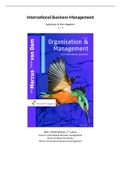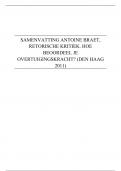Samenvatting
Samenvatting NL Organisation and management H1 - H7
Dit is een samenvatting van het boek Organisation and management, ISBN: 9669. Deze editie is de 2e druk en is geschreven door Jos Marcus & Nick van Dam. In dit document zijn de hoofdstukken 1 t/m 7 samengevat.
[Meer zien]






